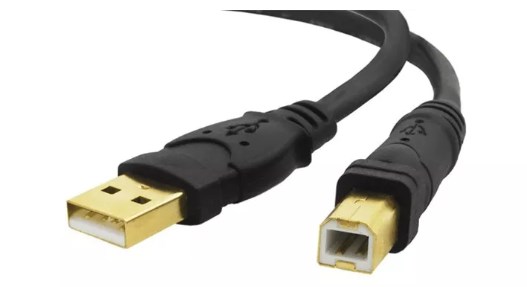Understand USB4 in one article
Source:Shenzhen Kai Mo Rui Electronic Technology Co. LTD2020-07-18
In March of this year, the USB Promoter Group (leadership group) released the USB4 specification for the first time, the next-generation USB architecture. And at the beginning of September, the USB Promoter Group released the final USB4 specification standard. If not surprisingly, it will not be too late next year and you can use USB4-based devices.
But before that, I believe that many friends do not know much about USB4, including the concept of USB 3.1, USB 3.2 and so on. It is also vague. Today, Kemori might give some introduction around USB4 to help everyone understand The advantages and essence of USB4.
History: complex and confusing naming
First of all, what we call USB4 refers to the USB transmission standard, which is a protocol specification related to USB transmission performance and efficiency. USB4 can be understood as the "4th generation" of this specification.
The USB transmission protocol was jointly developed and specified by Compaq, DEC, IBM, Intel, Microsoft, NEC and Nortel in 1994, and the USB V0.7 version was announced on November 11, 1994. Later, these companies established a non-profit organization to promote and support USB in 1995, called the USB Implementers Forum, which is the USB-IF we are familiar with, and USB-IF is now the USB standardization organization.
USB-IF officially proposed the USB1.0 specification in 1996, but at that time the USB1.0 transmission rate was only 1.5Mbps, the maximum output current was 5V/500mA, and there were very few peripheral devices supporting USB at that time, so few motherboard vendors The USB interface is directly designed on the motherboard.
▲USB 1.0
In September 1998, USB-IF released the USB 1.1 specification. This time the transmission rate was increased to 12Mbps, and some technical details in USB 1.0 were revised. The maximum output current is still 5V/500mA.

In April 2000, the USB 2.0 standard was introduced, the transmission rate reached 480Mbps, which is 60MB/s, which is 40 times that of USB 1.1, the maximum output current is 5V/500mA, and the 4-pin design is adopted. USB2.0 is still in service since its introduction, and it can be said to be the longest-lived USB standard.

Starting from USB2.0, USB-IF has demonstrated their "unique talent" in renaming.
In June 2003, USB-IF renamed the specifications and standards of USB, renamed USB 1.0 to USB 2.0 Low-Speed (Low-Speed) version, USB 1.1 renamed to USB 2.0 Full-Speed (Full-Speed) version, and USB 2.0 It is a USB 2.0 High-Speed (High-Speed) version.
However, this change at the time had little effect on the current situation, because USB1.0 and 1.1 have basically withdrawn from the stage of history.
In November 2008, the USB 3.0 Promoter Group composed of industry giants such as Intel, Microsoft, Hewlett-Packard, Texas Instruments, NEC, ST-NXP, etc. completed the USB 3.0 standard and released it publicly, with the external title SuperSpeed. The USB Promoter Group is mainly the development and formulation of USB series standards, and the standards will eventually be transferred to USB-IF for management.
The maximum transmission rate of USB3.0 reaches 5.0Gbps, that is 640MB/s, the maximum output current is 5V/900mA, it is backward compatible with 2.0, and supports full-duplex data transmission (that is, data can be received and sent at the same time, USB2.0 is half-duplex) Work), with better power management capabilities and other features.

USB3.0 uses a 9-pin design. The first four are the same as USB2.0, and the last five are specially prepared for USB3.0, so USB2.0 and USB3.0 can be judged by the pins.

In July 2013, USB 3.1 was released, the transmission speed was increased to 10Gbps (1280MB/s), known as SuperSpeed+, and the maximum allowable standard for power supply was increased to 20V/5A, or 100W.
The upgrade of USB 3.1 compared to USB 3.0 is also very obvious, but before long, USB-IF renamed USB 3.0 to USB 3.1 Gen1, and USB 3.1 to USB 3.1 Gen2.
This time change of name has brought trouble to consumers, because many profiteers only indicate that they support USB 3.1 in the product packaging, and it does not indicate whether it is Gen1 or Gen2. In fact, the transmission performance of the two is very different, and consumers will be accidental. Into the pit. Therefore, the name change is a foolish move for consumers.
The time comes to September 2017, when USB 3.2 was released, it supports dual 10Gbps channel data transmission under USB Type-C, the speed can reach 20Gb/s (2500MB/s), the maximum output current is still 20V/5A, and there are minor improvements in other aspects. .
▲ USB rename process
However, in 2019, USB-IF was renamed again. They changed the name of USB3.1 Gen 1 (the original USB3.0) to USB 3.2 Gen 1, and USB 3.1 Gen 2 (the original USB3.1). USB 3.2 Gen 2, and USB 3.2 was renamed USB 3.2 Gen 2x2.
To summarize the characteristics of USB historical version:

Present and future: a leap-forward upgrade of USB4
Finally speaking of USB4, what are the upgrades and improvements of this new generation of protocol standards? The first thing that can be determined is that since it is a cross-generation upgrade from "3" to "4", the extent of improvement must be not small.
Chemorui summarizes the information it has already mastered and sorts out the new features of USB4 as follows:
1. Maximum transmission speed of 40 Gbps:
Through dual-channel transmission, the theoretical maximum transmission speed of USB4 should reach 40 Gbps, which is the same speed as Thunderbolt 3 (hereinafter referred to as "Thunderbolt 3").
In fact, USB4 will have three transmission speeds: 10 Gbps, 20 Gbps and 40 Gbps. So if you want to buy a device with the highest transmission speed, which is 40 Gbps, it is best to check the specifications before buying.
2. Compatible with Thunderbolt 3 interface:
Some (not all) USB4 devices are also compatible with the Thunderbolt 3 interface, which means that if your device has a USB4 interface, it is possible to connect to Thunderbolt 3 devices. However, this is not mandatory. Whether it is compatible or not depends on the attitude of the equipment manufacturer.
3. Dynamic bandwidth resource allocation capability:
If you use the USB4 port while also using it to connect an external monitor and transfer data, the port will allocate the corresponding bandwidth according to the situation. For example, if the video only needs 20% of the bandwidth to drive a 1080p display, then the remaining 80% of the bandwidth can be used for other things. This was impossible in USB 3.2 and before. Prior to this, the way of working of USB was to take turns.
4. USB4 devices will all support USB PD
USB PD is USB Power Delivery (USB power transmission), one of the current mainstream fast charging protocols, which is also formulated by the USB-IF organization, the specification can achieve higher voltage and current, and the power delivered can reach up to 100W , And can freely change the direction of power transmission.

According to the regulations of USB-IF, the current standard form of USB PD charging interface should be USB Type-C. There are two pins CC1 and CC2 in the USB Type-C interface, which are used to configure the channel for PD communication.
5. Only USB Type-C interface can be used
With the above feature, it is natural that we can also know that USB4 can only run through the USB Type-C connector. In fact, not only USB PD, but also other latest USB-IF standards are only applicable to Type-C.
6. It can be backward compatible with past agreements
USB4 can be used with USB 3 and USB 2 devices and ports. In other words, it can be backward compatible to the previous protocol standards, but USB 1.0 and 1.1 are not supported, and the interfaces that still use this protocol on the market have almost disappeared.
Of course, when a USB4 device is connected to a USB 3.2 port, it cannot transmit at a speed of 40 Gbps, and the old USB 2 interface will not become faster by connecting it to the USB4 interface.
7. What is the relationship with Raiden 3? What's the cost?
What is certain is that the cost of USB4 is higher than that of USB 3.2. Although it is still uncertain how much the cost of adding USB4 interfaces to PC and equipment suppliers will increase, you can also refer to Thunderbolt 3~
In March of this year, Intel "donated" Thunderbolt 3 technology to the USB-IF organization (of course, Intel itself is the leader of USB-IF), and the USB4 specification came out soon afterwards. In fact, USB4 uses Thunderbolt 3 Agreement, there is little difference between the two. Intel's move is also to further popularize the Thunderbolt 3 interface and establish its "unity" status.
Of course, with the large-scale use of USB4 in the future, the cost will inevitably come down, which is what Intel is willing to see.
8. About naming
The standard writing of USB4 this year is "USB4" instead of "USB 4", with no spaces. For this, USB Promoter Group CEO Brad Saunders (Brad Saunders) explained that the purpose of removing the spaces is to shift the focus from the version number to the brand name.
He said: "One of the signals we want to convey is that we do not intend to enter the iterative path of 4.0, 4.1, 4.2... and we don't want to associate it with a specific product... We want to make it as simple as possible."
I hope this guy has his words.
9. When can it be used?
Although the current USB4 specification has been released, it is almost impossible to see USB4 products on the market before 2020. According to Sanders, the typical development cycle for new products is 12 to 18 months.
As for laptops and desktops that support USB4, it may take longer. For example, the specification of USB Type-C was announced in 2014, and it took a long time for USB Type-C to become mainstream. Many laptops still do not have a USB Type-C interface.
The above is the current information about the USB4 standard protocol that Camorui has mastered. More specific technology has not been announced. Of course, I believe that ordinary consumers have no special need to understand.
It is undeniable that from the previous combing of history, it can be seen that every time the USB standard is iteratively upgraded, functions and performance will be improved by leaps and bounds. This time, USB4 is no exception. At least, from what we have already understood. The information is still very exciting. It should not be a problem to meet the needs of device connection, data transmission, charging and other aspects in the next few years.
Related News
TVI vs CVI vs AHD vs CVBS vs SDI Security Cameras
2021-06-03CCD and CMOS image sensor shutter
2020-09-12Camera serial communication protocol
2020-09-05- 2020-08-29
How to calculate 720P/1080P/2K/4K/8K?
2020-08-22The working principle of image sensor
2020-08-15






 +8613798538021
+8613798538021